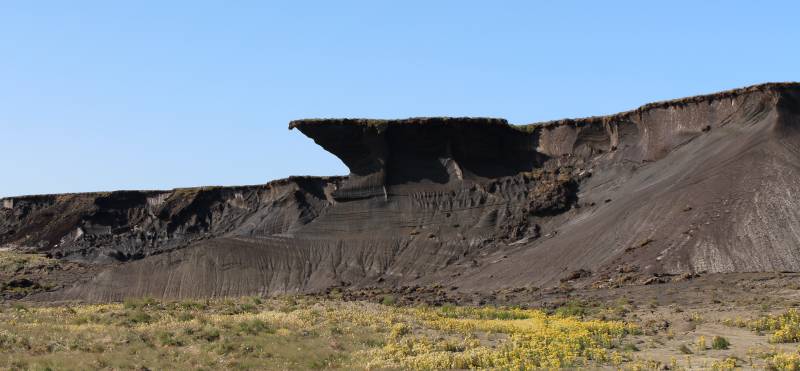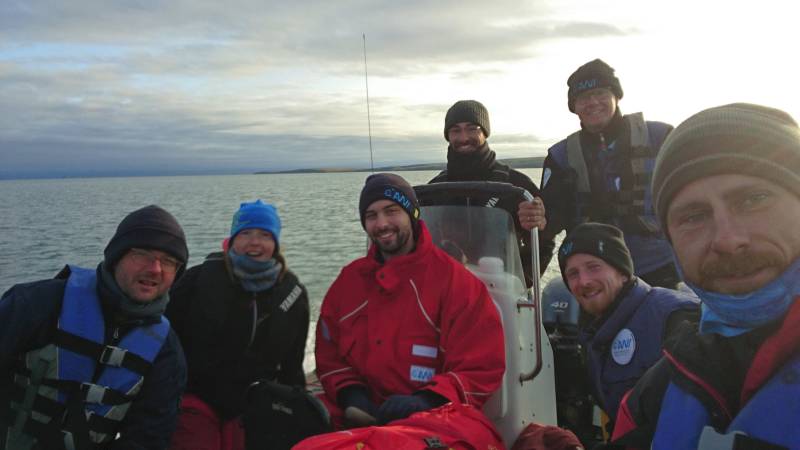The Zodiac approaches the beach in the morning hours. It is heavily loaded: six scientists, including gear and equipment, are sitting on the inflated edges of the boat, while Cedric stands starboard at the wheel. As soon as the engines turn off, all passengers start moving like ants. The first ones jump onto the beach to secure the Zodiac and to unload the boxes, backpacks and batteries.
We ‘anchor’ the boat on a large log of wood sitting on the narrow beach, transported there during one of the previous storms, before climbing up a small cliff. The sun is warming our backs as we climb upwards towards a major retrogressive thaw slump, one of the iconic erosional features located along Herschel Island’s permafrost-dominated coastlines. These impressive structures can develop towering headwalls reaching tens of metres high, where pure ice is exposed to the elements. Erosion processes such as landslides typically initiate their development. Slump D, situated in Thetis Bay on the east coast of Herschel Island, is supposed to be one of the largest retrogressive thaw slumps in the Arctic.
Reaching the crest of the cliff, a large black formation emerges on the horizon. As we near the headwall we walk along the outflow of the slump, a deeply-incised creek with flowing mud that transports the eroded material to the ocean. Eventually we reached the upper mudpool where the outflow originates as the sun glistened off the massive ice of the headwall, almost mimicking obsidian.

After we enjoyed this magnificent scenery, we remind ourselves that we did not go there for sightseeing but to collect data. Our team gets divided in two groups: 5 persons will help Saskia Eppinger from Technical University in Munich (Germany) to measure the underground structure of the thaw slump using electrical resistivity tomography (ERT), while Sebastian and Michael from AWI sample the buried massive (glacial?) ice of the headwall to detect the age of it. Heavy equipment is needed such as hammer, axe, and even a chainsaw to wrest large samples out of the frozen ground. The larger group distributes 200m of cables on various transects in the slump floor and behind the headwall in the undisturbed tundra. The preliminary results are very promising. We can clearly identify layers in the underground, where erosional processes change the slump morphology and the temperature field due to sustained heat input from liquid thawed material on the slump surface. We need more than twelve hours to measure all transects that were planned for today. During the measurements, which take 90 minutes each, we enjoy the beautiful weather. This mood gets disturbed by nothing except the electric chain saw that Sebastian and Michael use to cut the massive ice of the headwall. They manage to collect multiple pieces of almost pure ice at spots which are impossible to access without our crampons.
As the day passes by, the temperature gets lower and the wind starts to pick up, which makes it less comfortable to wait for the time-consuming ERT measurements. After a very long day in the thaw slump, we can make our way back to the Zodiac, which still lies at the shoreline where we left it in the morning. As we head back to our camp, we now have the sun in front of us, and we know that we will come back to the thaw slump soon.



